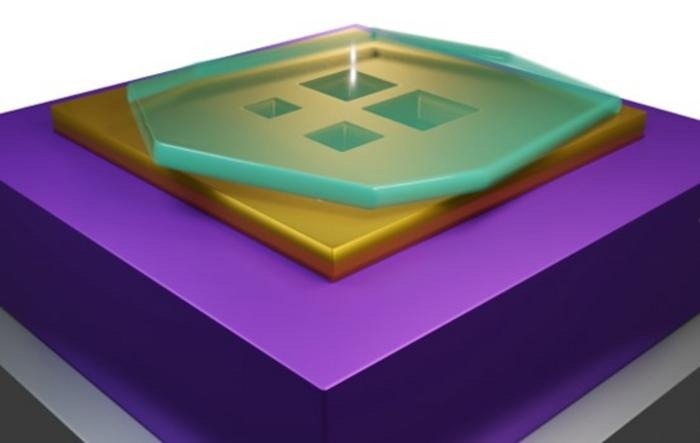A group of scientists have redefined the boundaries of light confinement and introduced an innovative type of polaritonic cavity, a major step forward for quantum nanophotonics. This groundbreaking breakthrough circumvents the normal constraints in nanophotonics by demonstrating an unusual way to restrict photons, as described in a study published in Nature Materials.
 3D rendering of 4 poalritonic cavities of different sizes. Image Credit: Matteo Ceccanti
3D rendering of 4 poalritonic cavities of different sizes. Image Credit: Matteo Ceccanti
Physicists have long been looking for ways to compress photons into increasingly compact volumes. The wavelength is the photon’s natural length scale, and forcing a photon into a cavity much smaller than the wavelength causes it to become more “concentrated”. This concentration increases interactions with electrons, enhancing quantum processes within the cavity.
Despite substantial achievement in confining light into deep subwavelength spaces, dissipation (optical absorption) remains a serious challenge. Photons in nanocavities are absorbed considerably quicker than the wavelength, limiting their use in some of the most promising quantum applications.
To tackle this difficulty, the research group of Prof. Frank Koppens from ICFO in Barcelona, Spain, developed nanocavities that have an unmatched combination of subwavelength volume and prolonged longevity. These nanocavities, which are just 3 nm thin and have an area of less than 100 × 100 nm², are able to confine light for far longer periods of time. The secret is to exploit hyperbolic phonon polaritons, which are special electromagnetic excitations that take place in the cavity’s two-dimensional material.
This study employs a novel and indirect confinement technique, contrasting with earlier research on phonon polariton-based cavities. Using an extreme (2–3 nanometer) focussed ion beam microscope, the nanoscale holes are drilled in a gold substrate to create the nanocavities.
Once the holes are made, a 2D substance called hexagonal boron nitride (hBN) is put on top. Hyperbolic photon polaritons, which are electromagnetic excitations comparable to regular light but capable of being contained in minuscule volumes, are supported by the hBN.
When polaritons travel over the metal’s edge, they are strongly reflected, allowing them to be trapped. This approach avoids directly manipulating the hBN and retains its pristine excellence, allowing for extremely restricted and long-lived photons in the cavity.
This finding started with an accidental observation while scanning 2D material structures using a nearfield optical microscope for a separate project. Polaritons in the mid-infrared area of the spectrum could have been generated and measured using a nearfield microscope, and the researchers saw an exceptionally high reflection of these polaritons off the metallic edge.
This surprising finding prompted a more thorough examination, which revealed the special confinement mechanism and its connection to the creation of nanorays.
However, after creating and measuring the cavities, the team was in for a surprising surprise.
Experimental measurements are usually worse than theory would suggest, but in this case, we found the experiments outperformed the optimistic simplified theoretical predictions. This unexpected success opens doors to novel applications and advancements in quantum photonics, pushing the boundaries of what we thought was possible.
Dr. Hanan Herzig Sheinfux, Study First Author and Professor, Department of Physics, Bar-Ilan University
During his postdoctoral tenure at ICFO, Dr. Herzig Sheinfux collaborated with Prof. Koppens on the study. He aims to utilize these cavities to see previously thought-impossible quantum events, as well as to investigate the fascinating and paradoxical physics of hyperbolic phonon polariton activity.
Journal Reference:
Sheinfux, H. H., et. al. (2024) High-quality nanocavities through multimodal confinement of hyperbolic polaritons in hexagonal boron nitride. Nature Materials. doi:10.1038/s41563-023-01785-w.